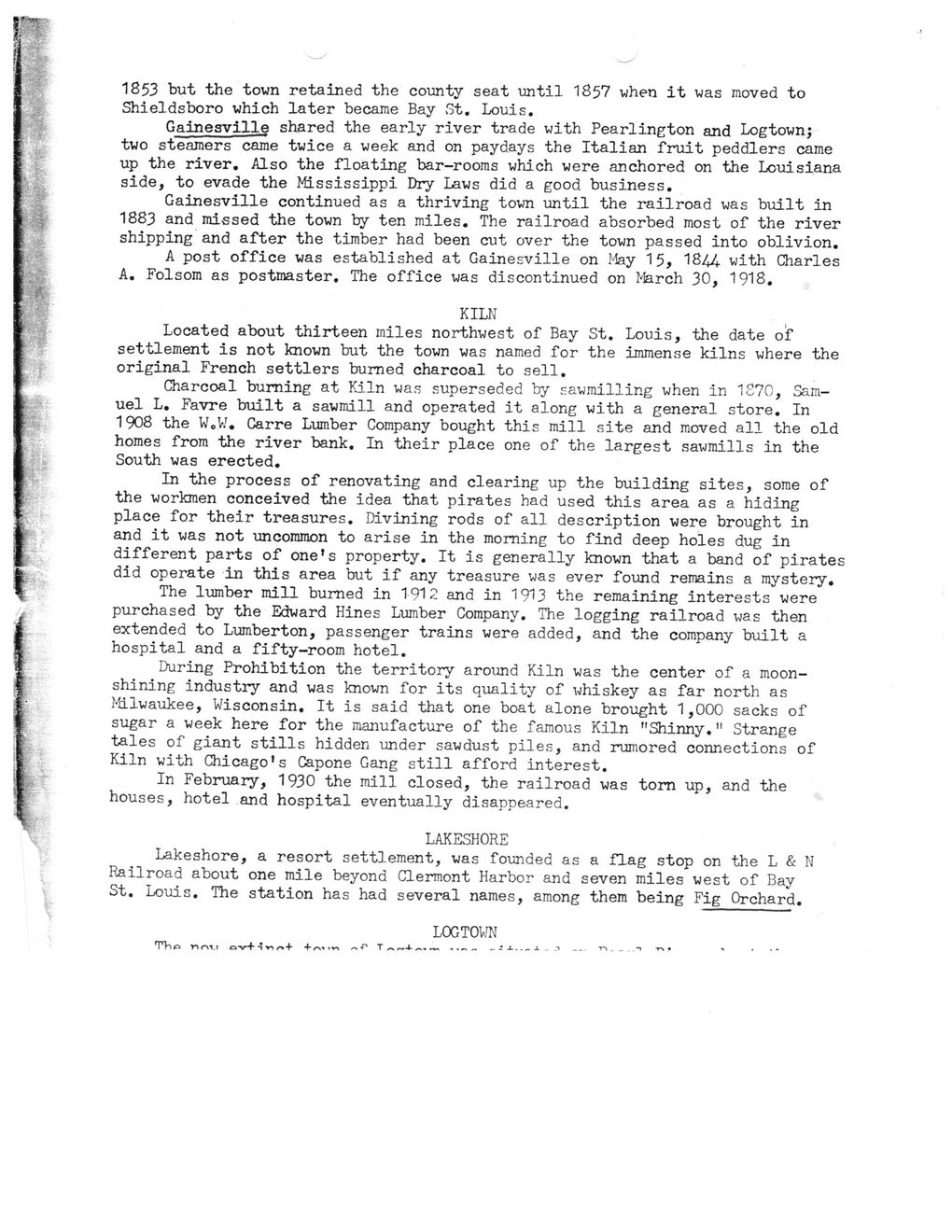This text was obtained via automated optical character recognition.
It has not been edited and may therefore contain several errors.
1853 but the town retained the county seat until 1857 when it was moved to Shieldsboro which later became Bay St. Louis. Gainesville shared the early river trade with Pearlington and Logtown; two steamers came twice a week and on paydays the Italian fruit peddlers came up the river. Also the floating bar-rooms which were anchored on the Louisiana side, to evade the Mississippi Dry Laws did a good business. Gainesville continued as a thriving town until the railroad was built in 1883 and missed the town by ten miles. The railroad absorbed most of the river shipping and after the timber had been cut over the town passed into oblivion. A post office was established at Gainesville on May 15, 18^/. with Charles A. Folsom as postmaster. The office was discontinued on March 30, 1918. KILN Located about thirteen miles northwest of Bay St. Louis, the date of settlement is not known but the town was named for the immense kilns where the original French settlers burned charcoal to sell. Charcoal burning at Kiln was superseded by sawmilling when in 1870, Samuel L. Favre built a sawmill and operated it along with a general store. In 1908 the W0W. Carre Lumber Company bought this mill site and moved all the old homes from the river bank. In their place one of the largest sawmills in the South was erected. In the process of renovating and clearing up the building sites, some of the workmen conceived the idea that pirates had used this area as a hiding place for their treasures. Divining rods of all description were brought in and it was not uncommon to arise in the morning to find deep holes dug in different parts of one's property. It is generally known that a band of pirates did operate in this area but if any treasure was ever found remains a mystery. The lumber mill burned in 1912 and in 1913 the remaining interests were purchased by the Edward Hines Lumber Company. The logging railroad was then extended to Lumberton, passenger trains were added, and the company built a hospital and a fifty-room hotel. During Prohibition the territory around Kiln was the center of a moon-shining industry and was known for its quality of whiskey as far north as Milwaukee, Wisconsin. It is said that one boat alone brought 1,000 sacks of sugar a week here for the manufacture of the famous Kiln "Shinny." Strange tales of giant stills hidden under sawdust piles, and rumored connections of Kiln with Chicago’s Capone Gang still afford interest. In February, 1930 the mill closed, the railroad was tom up, and the houses, hotel and hospital eventually disappeared. LAKESH0RE Lakeshore, a resort settlement, was founded as a flag stop on the L & N Railroad about one mile beyond Clermont Harbor and seven miles west of Bay St. Louis. The station has had several names, among them being Fig Orchard. LOGTOWN TVl P Tt rM.l ov+ in + r\y »*■"» a-T T >—4- - — - J- -. — T~V _ _

Gainesville Document-040